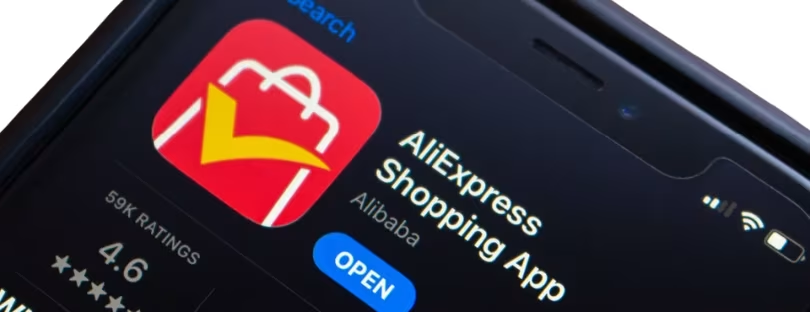
The Best of Both Worlds: Unlocking Dual SIM Capabilities on iPhone
Apple introduced dual SIM support for the iPhone starting with the XS, XS Max, and XR models in 2018. This long-awaited feature allows iPhone users to have two separate SIM cards on the same phone. One key benefit is that you can use two different phone numbers on a single iPhone. i phone dual sim
Dual SIM iPhones are extremely useful for anyone who travels frequently or needs to manage personal and business phone numbers on one device. Previously, you’d have to carry two phones or forward calls back and forth. With dual SIM, both SIMs can be active simultaneously and receive calls and texts to each number independently.
Dual SIM iPhones bring flexibility and convenience to managing multiple lines. While it’s not for everyone, it’s a game-changer for people and businesses that can take advantage of the expanded functionality.
History of Dual SIM iPhones
Apple first introduced dual SIM support for the iPhone in September 2018 with the launch of the iPhone XS, iPhone XS Max, and iPhone XR. These were the first iPhone models to include dual SIM capabilities.
Prior to 2018, iPhones only supported a single SIM. With dual SIM support, iPhone users can now use two SIM cards in one iPhone. This allows flexibility to have two phone numbers, use local data when traveling abroad, or have separate lines for personal and business use.
The 2018 iPhone XS, XS Max, and XR all featured dual SIM dual standby (DSDS). This means both SIMs can be active at the same time, but only one SIM can be used for calls or data at a time. If a call or data is active on SIM 1, SIM 2 can’t be used for calls or data until it’s finished.
Later iPhone models, including the iPhone 11, iPhone 12, iPhone 13, and iPhone 14 series, all also support dual SIM DSDS. So any iPhone from the XS onwards allows dual SIM functionality.
How It Works
The iPhone’s dual SIM capability allows users to have two separate SIM cards on one iPhone. This gives you two different phone numbers and data plans on a single device.
Two main technologies enable dual SIM on the iPhone:
Physical Dual SIM
Some iPhone models contain a physical dual SIM tray that can hold two nano-SIM cards. Both SIMs can connect to cellular networks to make calls, send texts, and access mobile data simultaneously. The user can switch between the two SIM profiles in the Settings app.
Physical dual SIM iPhones contain Qualcomm Snapdragon modems that can actively connect to two networks at once. This allows both SIMs to receive calls and texts without pausing the other SIM.
Physical dual SIM iPhones include:
- iPhone XS
- iPhone XS Max
- iPhone XR
Dual SIM with eSIM
Other iPhone models support dual SIM through one physical nano-SIM and one eSIM. The eSIM is a digital SIM integrated into the phone’s motherboard.
The physical SIM works normally to connect to a cellular network. The eSIM can be configured to connect to a separate phone number and data plan from a carrier.
Unlike true dual SIM models, phones with an eSIM and physical SIM cannot actively connect to both networks simultaneously. Only one SIM can connect to a cellular network at a time. Switching between the two requires manually toggling in Settings.
iPhones with eSIM and single physical SIM slot:
- iPhone XR (2018)
- iPhone XS and iPhone XS Max (2018)
- iPhone 11, iPhone 11 Pro, and iPhone 11 Pro Max
- iPhone 12, iPhone 12 mini, iPhone 12 Pro, and iPhone 12 Pro Max (2020)
- iPhone SE 2nd Gen
- iPhone SE (3rd generation) (2022)
So in summary, true dual SIM iPhones with two physical SIM slots provide simultaneous connectivity. Models with an eSIM and single SIM slot can only connect to one cellular network at a time.
Benefits of a Dual SIM iPhone
Having two SIM card slots allows iPhone users to take advantage of several benefits not available on single SIM iPhones.
The main advantage of a dual SIM iPhone is the ability to use two phone numbers on one device. This allows users to have separate personal and work phone numbers without carrying two phones. Users can set different ringtones and notifications for each line so they know which number an incoming call or message is for.
Dual SIM iPhones are very convenient for those who want to keep their work and personal communications separate. With a dual SIM, users don’t have to forward calls or juggle two phones. Everything can be managed on one iPhone.
Another benefit is that users can get cell or data services from two different carriers. For example, a user could have one SIM for Verizon and one for T-Mobile. This allows them to get coverage in more areas by using the network with the best signal. It also allows them to choose the carrier with the best rates and plans for each line.
Overall, the dual SIM capability gives iPhone users more flexibility and convenience. Maintaining two numbers is seamless with everything accessible from a single device.
Limitations
The ability to use dual SIM with an iPhone does come with some limitations. Only certain iPhone models support dual SIM functionality. Specifically, the iPhone XS, iPhone XS Max, iPhone XR, and later models are equipped with dual SIM capabilities.
Older iPhone models cannot use two SIMs at once. Additionally, even dual-SIM iPhones are limited to using only one physical nano-SIM. The second SIM must be an eSIM or digital SIM. The phone cannot operate with two physical SIM cards together. While somewhat limited compared to some Android phones that accept two physical SIMs, the dual SIM feature still provides more flexibility than a single SIM setup.
Using Dual SIM
Dual SIM functionality allows iPhone users to have two separate phone numbers that can make and receive calls and text messages on a single device. Here’s how to set up and configure dual SIM on an iPhone:
-
Go to Settings > Cellular > Add Cellular Plan to add the second SIM card and activate your cellular plan. Follow the on-screen steps to complete the activation process.
-
Once the second SIM is activated, go back to Settings > Cellular, and you’ll see two phone numbers listed under Cellular Plans.
-
Tap on the phone number to configure options for each SIM card. You can customize settings like enabling or disabling data, enabling or disabling SMS relays, and selecting which number to use for iMessage.
-
You can also enable multiple cellular data lines under Cellular Data. This allows you to use data from both SIM cards simultaneously for better network coverage and speeds.
-
By default, your iPhone will use the primary SIM to make outgoing calls. But you can easily change this in Settings during the call by tapping the SIM name at the top and selecting the other line.
-
For text messages, you can select which phone number to use as the sender ID when composing a new message. Tap the sender field and choose the active number.
That covers the basics of activating and customizing dual SIM cards on your iPhone. With two SIMs, you can easily separate work and personal lines or have additional phone numbers when traveling abroad, all on one device.
Travel Usage
One of the most popular reasons people get dual-sim iPhones is for travel. When you travel abroad, you’ll likely want to get a local SIM card so you can access cheaper data rates and avoid expensive roaming charges from your home carrier. With a dual SIM iPhone, you can keep your home SIM installed for calling and texting and use the second SIM slot for a local data SIM.
This allows you to make calls and texts on your regular number while using mobile data on the local network. You get the best of both worlds: keeping your main number active while paying local rates for data. It’s very convenient to have both SIMs on one device.
Some tips for using a dual SIM when traveling:
-
Research the best local SIM card deals at your destination before you go. Some providers offer tourism SIMs with prepaid data packages.
-
Inform your home carrier that you’ll be using a foreign SIM to avoid any automatic roaming charges.
-
Set your local data SIM as the primary data connection. Go to Settings > Cellular > Cellular Data Options on dual SIM iPhones.
-
Disable data roaming on your home SIM card to prevent inadvertent charges.
-
Use eSIM where available for your second SIM, as they’re easy to activate and don’t require a physical SIM card.
Having a dual SIM The iPhone takes the headache out of managing SIMs when traveling. You can seamlessly switch between networks as needed, getting the most value out of your cell plan.
Dual SIM vs eSIM
The introduction of eSIM technology has provided an alternative to traditional physical dual SIM implementations. Both options have their own pros and cons that users should consider when deciding which solution works best for their needs.
Physical Dual SIM
- Allows use of two SIMs from different carriers simultaneously
- Easy to obtain and replace SIM cards
- Requires a phone with dual SIM capability
- Takes up space for two SIM slots
eSIM
- Allows for multiple SIM profiles virtually
- More hassle to setup and switch between profiles
- Works on phones without dual SIM hardware
- Virtual profiles take up less physical space
- Limitations on the number of profiles depending on the carrier
The choice between a physical dual SIM or eSIM often depends on the availability and flexibility needed. Frequent travelers may prefer dual SIM for easy carrier switching, while those who don’t switch often may find eSIM more convenient. As more carriers adopt eSIM technology, it may replace physical SIMs in the future. But for now, dual SIM still offers greater flexibility and compatibility for most users.
Carrier Support i phone dual sim
Here are some of the major carriers in the United States and Canada that support dual SIM on iPhones:
Canada
- Rogers
- Bell
- Telus
- Freedom Mobile
- Koodo Mobile
- Virgin Plus
- Public Mobile
These carriers offer dual SIM support on a variety of iPhone models, including the iPhone XR, iPhone XS, iPhone 11, iPhone 12, iPhone 13, and iPhone SE (3rd generation).
Note:
- Not all carrier plans are compatible with dual SIM.
- Some carriers may have specific restrictions on how a dual SIM can be used.
- It is always best to check with your carrier to confirm their specific dual SIM support policies before purchasing an iPhone.
The Future i phone dual sim
Dual SIM support is likely to become even more common in future iPhone models. This is due to several factors, including:
- The increasing popularity of eSIMs: eSIMs are digital SIM cards that are embedded in the phone’s motherboard. They offer several advantages over traditional physical SIM cards, such as being easier to switch between carriers and being able to use multiple eSIMs at the same time.
- The growing demand for dual SIM capabilities: More and more people are using their phones for both personal and business purposes. Dual SIM support can help them to separate their personal and work life, and to save money on phone bills by using multiple carriers.
As a result of these factors, we can expect to see more and more iPhone models with dual SIM support in the future. Apple may eventually make dual SIM support a standard feature on all iPhone models.
Here are some of the potential benefits of dual SIM support on future iPhone models:
- Travelers can save money by using local SIM cards when they are abroad.
- People with multiple phone numbers can easily switch between them.
- Businesses can give their employees work and personal phones on the same device.
Overall, dual SIM support is a valuable feature that can benefit a wide range of iPhone users. We can expect to see it become even more popular in the years to come.
Apple is expected to improve the dual SIM capabilities in future iPhones. This could include enabling both SIMs to be active on 4G/LTE simultaneously. Apple may also switch to using eSIMs exclusively, eliminating the physical SIM slot.
The dual SIM market is important in regions like China and India, where consumers frequently use separate numbers for work and personal lines. As Apple continues to grow in these markets, enhancing the dual SIM feature will likely be a priority.
We’ll have to wait for future iPhone launches to see exactly how Apple expands and improves dual SIM support. However, the currently limited implementation indicates dual SIM remains an area of focus for Apple. Delivering a more flexible and powerful dual SIM solution will help boost iPhone appeal and sales in key global markets.
Here are some indicative prepaid eSIM card prices for Europe from a few of the best eSIM companies:














